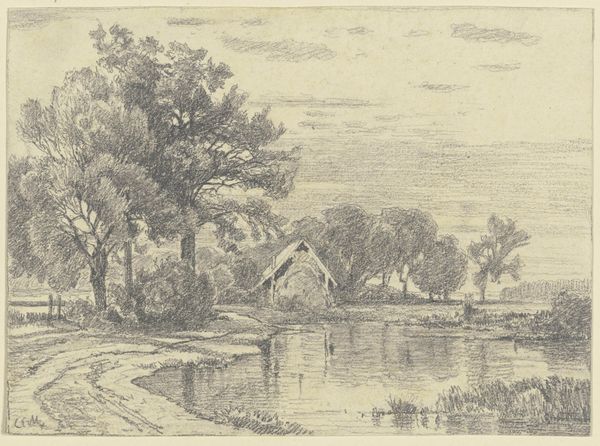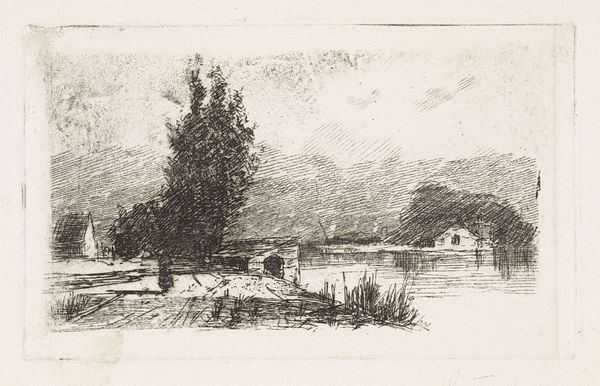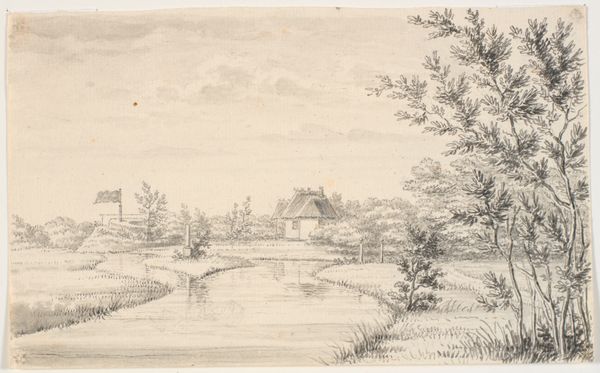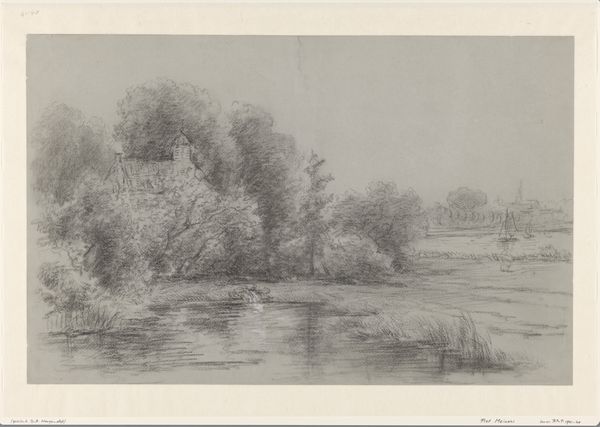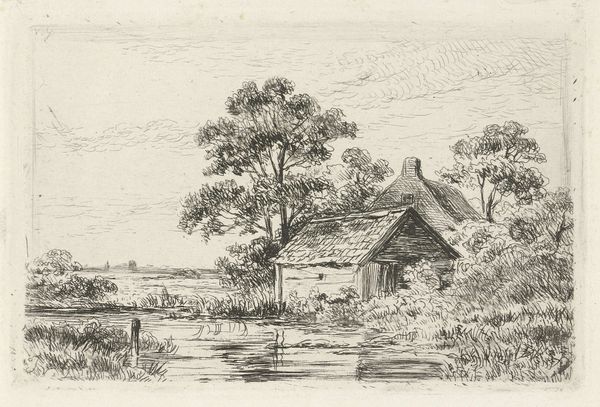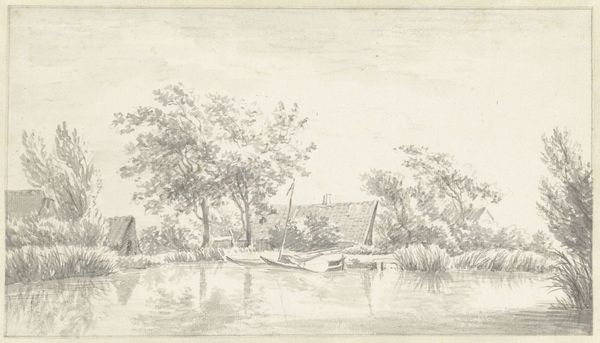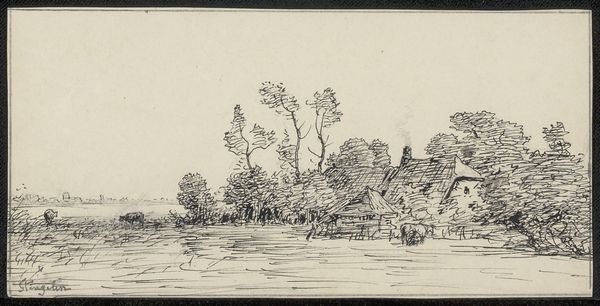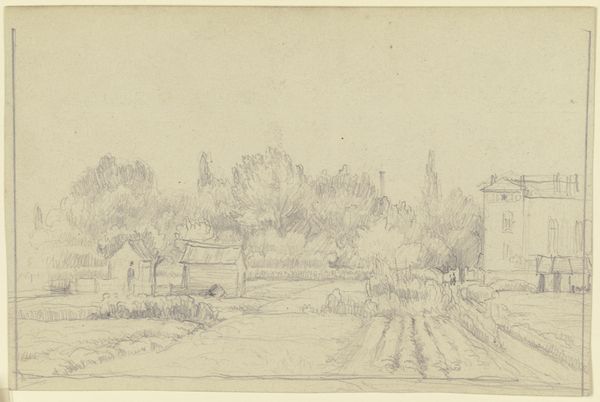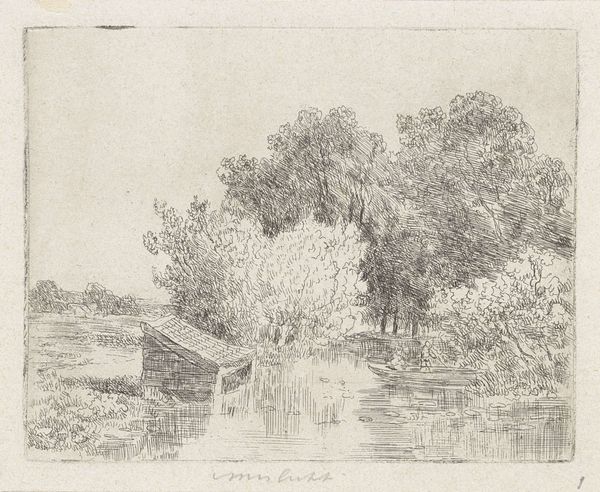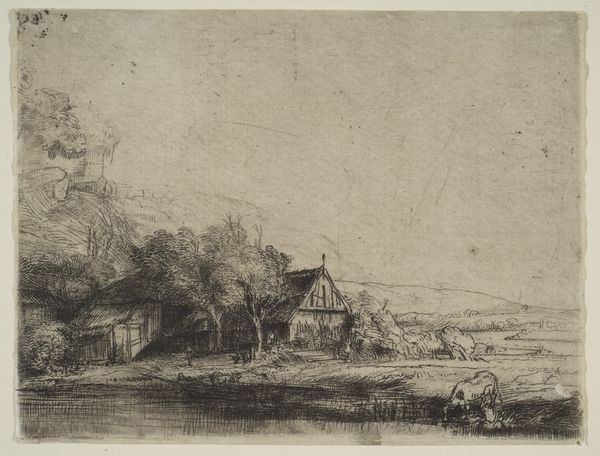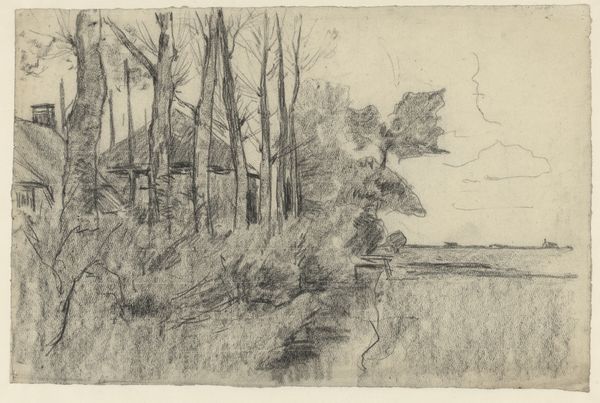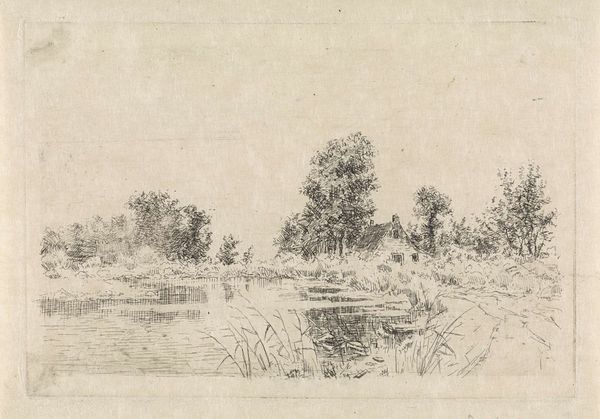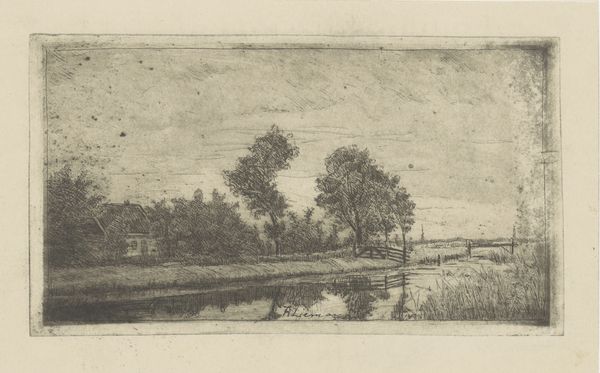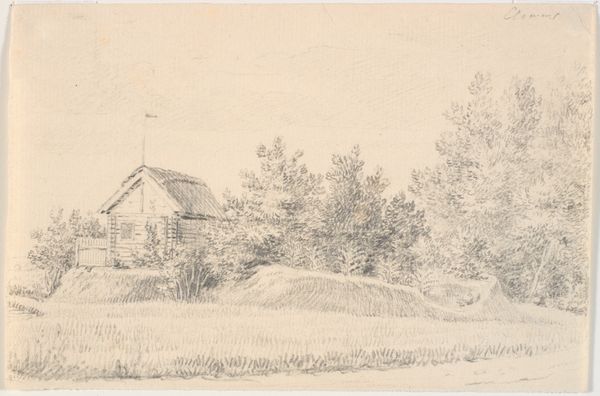
drawing, graphite
#
drawing
#
landscape
#
graphite
#
realism
Copyright: Rijks Museum: Open Domain
Curator: Welcome. Before us is "Landscape with Water and Houses," a graphite drawing by Alexander Shilling, created between 1888 and 1889. Editor: It’s evocative, almost dreamlike. The soft graphite gives everything a muted, tranquil quality. A stillness permeates the work—a palpable sense of peace. Curator: Observe the artist's strategic use of shading. The depth he achieves with such a simple medium is remarkable. Notice the texture—how he differentiates between the rough reeds in the foreground and the smooth surface of the water reflecting the buildings. Editor: I find myself drawn to the societal context it elicits. One imagines the late 19th century in Europe. Were the buildings homes of rural workers? Is this a landscape being observed, used, perhaps exploited? The composition asks us to consider land ownership, perhaps the emerging tensions between industrialization and rural life. Curator: But the artist does not provide that narrative explicitly. What Shilling gives us is more about the pure visual elements at play. How the horizontal lines of the water and sky meet the verticality of the trees and the solid mass of the buildings. It’s about compositional harmony, balance and counter-balance in a deceptively simple format. Editor: True, but even that composition resonates with sociopolitical dimensions. A "balanced" landscape—who does it benefit? Is this constructed harmony obscuring existing disparities, such as issues surrounding pollution or sustainability, given that its creation sits near the cusp of industrial acceleration? It forces us to ask—whose idyllic scenery is this really? Curator: Ultimately, the success of this piece, irrespective of intent, is the masterful use of the medium. A study of tones, really, creating a nuanced vision. Editor: And also a document, regardless of its initial intention. One holding a rich history to examine through multiple interpretive frameworks, thus allowing a new look into 1880s Europe. Curator: An exercise of form… Editor: … with complex social implications. Curator: Thank you for your attention. Editor: Thank you.
Comments
No comments
Be the first to comment and join the conversation on the ultimate creative platform.
